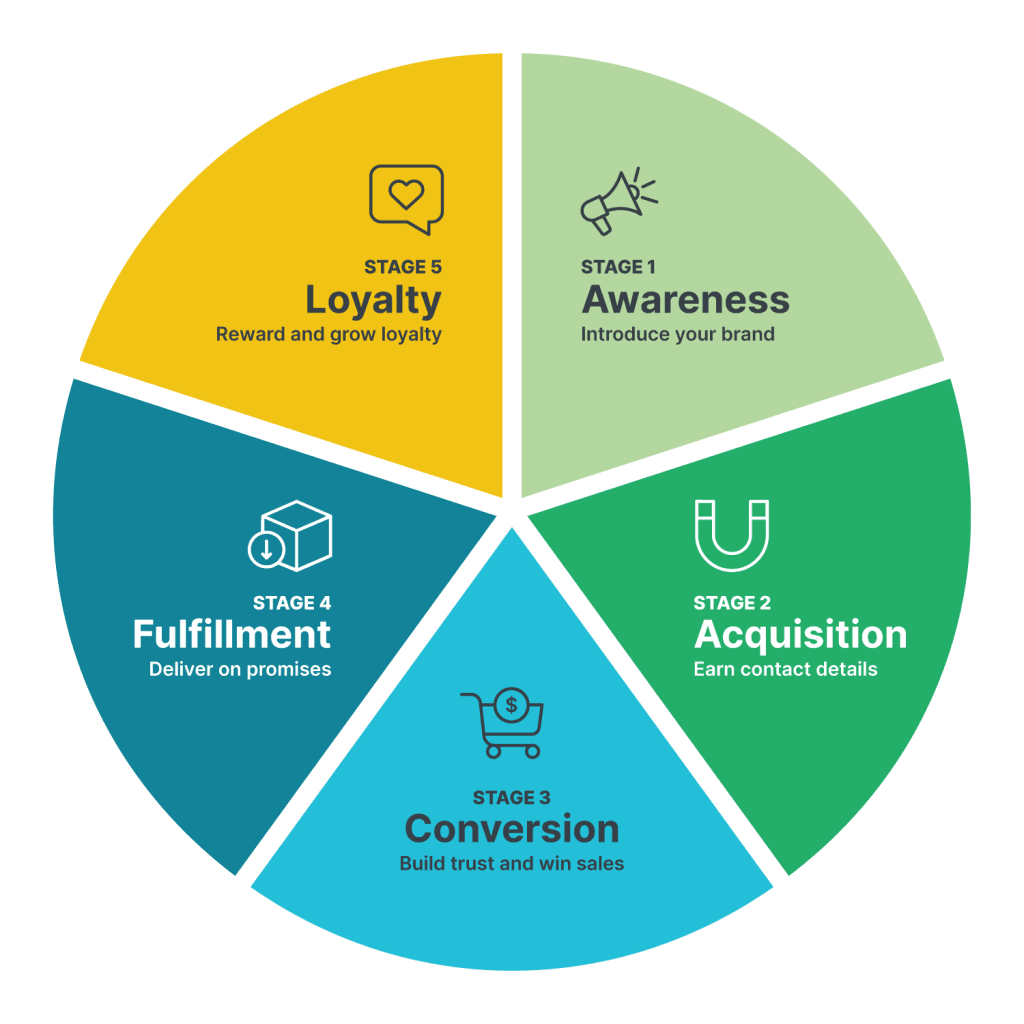Customer Lifecycle of an Ecommerce Business
)
When you focus on enhancing the whole customer journey, you can deliver a more memorable experience for your customers, which leads to more repeat customers, better reviews, and even more new customers.
Maybe you've been hyperfocused on getting new customers and you haven't had the time to make sure they stick around? When you focus on enhancing the whole customer journey, you can deliver a more memorable experience for your customers, which leads to more repeat customers, better reviews, and even more new customers.
The customer journey or customer experienceis the journey someone goes through to find your brand, decide to make a purchase, and (hopefully) become a repeat customer.
To become a customer, people want to know they can trust your brand to provide high-quality service and products that deliver value for their money. It is much like dating. People want to get to know you, and you don't ask the person to move in after the first date.
It's your responsibility as a brand builder to understand how to educate your potential customers about the value you provide. Then, translate that value to a message that's appropriate based on where the customer is in the lifecycle.
Step 1. In the awareness stage, your goal is to make new people aware of your brand and product.
Step 2. Next comes the acquisition stage, when you convince a potential customer to subscribe to your brand and give you access to their email, phone number, and/or social media. To get access to a customer's contact information, you'll need to provide them with valuean exclusive discount or highly engaging content they need (and want) to sign up for.
Step 3. The conversion stage is when you nurture your subscribers by educating them about your product value until they decide to buy. This stage often also includes extra incentives to get customers past the initial hesitation of deciding to make a purchaselike discounts, free shipping, and early access to products or offers.
Step 4. After purchasing, the fulfillment stage includes getting your products or services to your customer's doorstep.
Step 5. Finally, the loyalty stage is how you engage with people who have made at least one purchase in order to drive more purchases and create brand advocates.
To create an outstanding customer experienceand continually guide people to buy from your businessconsider how you engage your customers in each of these stages.
) Author:Danielle MacInnis
Author:Danielle MacInnis| Tags:Customer Centric MarketingCustomer InsightCustomer Lifecycle |
Post comment




